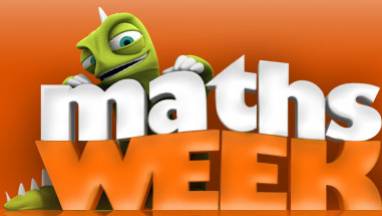Children are using early math skills throughout their daily routines and activities. This is good news as these skills are important for being ready for school. Even before they start school, most children develop an understanding of addition and subtraction through everyday interactions. Other math skills are introduced through daily routines you share with your child—counting steps as you go up or down, for example. Informal activities like this one give children a jumpstart on the formal math instruction that starts in school.
Early mathematical concepts and skills that are learned in kindergarten include:
Understanding size, shape, and patterns
Ability to count verbally 1-10
Recognizing numerals and its value from 1-5
- Understanding one-to-one correspondence (i.e., matching sets)
What You Can Do
The tips below highlight ways that you can help your child learn early math skills by building on their natural curiosity and having fun together.
· Shape up. Play with shape-sorters. Talk with your child about each shape—count the sides, describe the colors. Make your own shapes by cutting large shapes out of colored construction paper. Ask your child to “hop on the circle” or “jump on the red shape.”
· Count and sort. Gather together a basket of small toys, shells, pebbles or buttons. Count them with your child. Sort them based on size, color, or what they do (i.e., all the cars in one pile, all the animals in another).
· You’re cookin’ now! Even young children can help fill, stir, and pour. Through these activities, children learn, quite naturally, to count, measure, add, and estimate.
· Walk it off. Taking a walk gives children many opportunities to compare (which stone is bigger?), assess (how many acorns did we find?), note similarities and differences (does the duck have fur like the bunny does?) and categorize (see if you can find some red leaves). You can also talk about size (by taking big and little steps), estimate distance (is the park close to our house or far away?), and practice counting (let's count how many steps until we get to the corner).
· Shape up. Point out the different shapes and colors you see during the day. On a walk, you may see a triangle-shaped sign that’s yellow. Inside a store you may see a rectangle-shaped sign that’s red.
· Read and sing your numbers. Sing songs that rhyme, repeat, or have numbers in them. Songs reinforce patterns (which is a math skill as well). They also are fun ways to practice language and foster social skills like cooperation.
· Big on blocks. Give your child the chance to play with wooden blocks, plastic interlocking blocks, empty boxes, milk cartons, etc. Stacking and manipulating these toys help children learn about shapes and the relationships between shapes (e.g., two triangles make a square). Nesting boxes and cups for younger children help them understand the relationship between different sized objects.
· Tunnel time. Open a large cardboard box at each end to turn it into a tunnel. This helps children understand where their body is in space and in relation to other objects.
· The long and the short of it. Cut a few (3-5) pieces of ribbon, yarn or paper in different lengths. Talk about ideas like long and short. With your child, put in order of longest to shortest.
· Learn through touch. Cut shapes—circle, square, triangle—out of sturdy cardboard. Let your child touch the shape with her eyes open and then closed.
· Pattern play. Have fun with patterns by letting children arrange dry macaroni, chunky beads, different types of dry cereal, or pieces of paper in different patterns or designs. Supervise your child carefully during this activity to prevent choking, and put away all items when you are done.
· Laundry learning. Make household jobs fun. As you sort the laundry, ask your child to make a pile of shirts and a pile of socks. Ask him which pile is the bigger (estimation). Together, count how many shirts. See if he can make pairs of socks: Can you take two socks out and put them in their own pile? (Don’t worry if they don’t match! This activity is more about counting than matching.)
· Playground math. As your child plays, make comparisons based on height (high/low), position (over/under), or size (big/little).
· Dress for math success. Ask your child to pick out a shirt for the day. Ask: What color is your shirt? Yes, yellow. Can you find something in your room that is also yellow? As your child nears three and beyond, notice patterns in his clothing—like stripes, colors, shapes, or pictures: I see a pattern on your shirt. There are stripes that go red, blue, red, blue. Or, Your shirt is covered with ponies—a big pony next to a little pony, all over your shirt!
The children enjoyed learning about plant growth by watching their vetches grow. They came each morning and looking to see if there was any evidence of the seeds sprouting.
suncatcher craft is made from torn bits of tissue paper, clear contact paper. than we did 4 types of shapes, colours and numbers.
Number line from 1-5 children touch and count dots than counting unifix cubes
Sorting caps by colour
Number 3 and value
Matching eggs
Learning about small, medium, big
Using a scale means heavy ,light or the same
4 coloured balloons.Each balloon had a number written on it! children had to tell me the number and colour.
